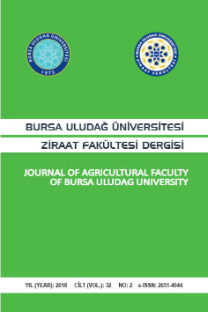Limousin X holstein F1 melezlerinde besi performansı ve karkas özellikleri
karkas bileşimi, sığır ırkları, Alacalı Sığır, canlı ağırlık artışı, cinsiyet farklılıkları, Limousin (sığır ırkı), et randımanı, karkas ağırlığı, besi performansı, melez ırklar
Fattening performance and carcass characteristics in the imousin X holstein F1 crossbreds
carcass composition, cattle breeds, Holstein-Friesian, liveweight gain, sex differences, Limousin (cattle breed), dressing percentage, carcass weight, fattening performance, crossbreds,
- ISSN: 1301-3173
- Yayın Aralığı: Yılda 2 Sayı
- Başlangıç: 1981
- Yayıncı: Ahmet Akkoç
Zeki YILMAZ, Sezgin ŞENTÜRK, Hasan BATMAZ
Karayaka erkek kuzularda kırkımın besi performansına etkileri
Mycoplasma mycoides subspecies mycoides'in civciv tracheal organ kültürüne etkisinin incelenmesi
Döl tutmayan ineklerde leptospirosis' in seroprevalansı
Cengiz ÇETİN, İBRAHİM DOĞAN, Vildan ÖZDEMİR
İshalli ve sağlıklı buzağılarda campylobacter jejuni ve campylobacter coli prevalansı
Cengiz ÇETİN, Nilüfer AYTUĞ, Engin KENNERMAN
Evaluation of Hb1 genotype obtained by the crossbreeding of hampshire down and kıvırcık sheep breeds
Hıdır DEMİR, MUSTAFA ÖZCAN, Alper YILMAZ, Şebnem Gündal ÇÖREKCİ
Bazı yabani ve Kafes kuşlarında gözlenen klinik ve patolojik bulgular
Selahattin SALT, Selda ÖZBİLGİN, ÖZLEM ÖZMEN, Deniz MISIRLIOĞLU
Doğal koşullarda üretilen ve ısı işlemi uygulanan sucuklarda starter kültürlerin kullanım olanakları
Şahsene ANAR, GÜL ECE SOYUTEMİZ, SERAN TEMELLİ, FİGEN ÇETİNKAYA
Örgü peynirin üretim aşamalarında görülen bazı mikrobiyolojik ve kimyasal değişimler
